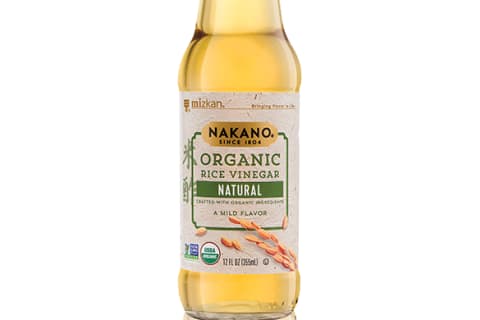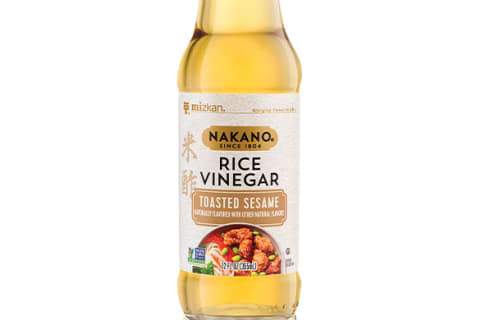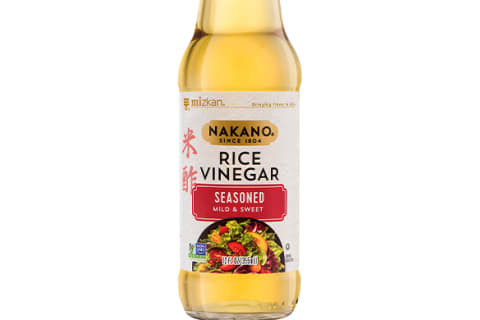Advertisement
Full-On Flavor: 4 Ways Rice Vinegar Makes Your Food Taste Better

Ashley Jordan Ferira, Ph.D., RDN is Vice President of Scientific Affairs at mindbodygreen. She received her bachelor's degree in Biological Basis of Behavior from the University of Pennsylvania and Ph.D. in Foods and Nutrition from the University of Georgia.
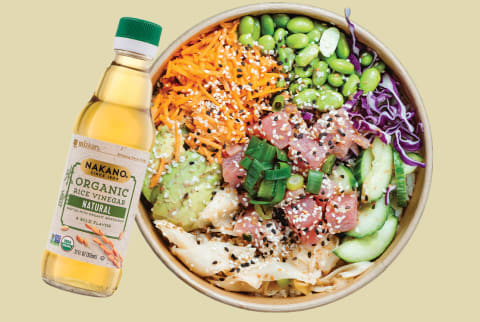
If you open up anyone's kitchen cabinet, you'll get a little insight into which ingredients get the most action. And whatever's in the front row—olive oil, ghee, apple cider vinegar—says a lot about a person and what they're eating. But our question for you: How about rice vinegar? Has it taken its rightful spot in your lineup? We hope so because that means you're a person who cares about flavor and is simply eating better!
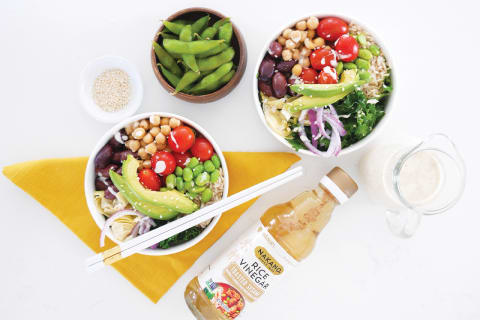
The scoop on rice vinegar.
Despite the common assumption, rice vinegar isn't only for creating delicious Asian cuisine. NAKANO Rice Vinegars can actually be used across the board. With their wide variety of flavors, they can be used in anything from cocktail recipes to desserts. They feature a flavor of rice vinegar for every palate: Natural, Organic Natural, Roasted Garlic, Seasoned, Organic Seasoned, Toasted Sesame, and Basil & Oregano.
Rice vinegar is made by two distinct fermentation processes. The first fermentation process converts sugars from the raw materials (aka rice) into alcohol, and the second fermentation process converts that alcohol into acid. This is the acetic, or acid fermentation, that forms vinegar. And while this acidic taste created from this brewing process is enough to add some tang to our recipes, it is less acidic than white or balsamic vinegar. Plain rice vinegar actually has a mildly sweet and slightly sour flavor but often comes in flavored varieties, too. So how does this special ingredient go about making our food taste so good?
1. Rice vinegar is the perfect acidic component of a salad dressing.
The key to any phenomenal salad dressing comes down to balance. Every dressing should have components of sweet, salt, acidic, and oil. Of all these flavors, finding the right acidic ingredient can be tricky. Lemons often end up being too sour, while balsamic vinegar carries a very defined flavor profile. NAKANO Natural Rice Vinegar brings the perfect amount of balanced flavor to many styles of salad dressing. As you whip up this Ginger Salad Dressing, you'll see what we mean...
2. It enhances flavor, without the need for added salt in many recipes.
When we think of vinegar, our mouth may start to pucker a bit. But that's not the only flavor note that comes with rice vinegar. Rice vinegar can actually serve to substitute some added salt in a recipe. It similarly brightens and enhances the flavor of any sauce, marinade, or dressing—and with the NAKANO Roasted Garlic Rice Vinegar, you add even more flavor complexity. Try it out in this Maple Tamari Glazed Pork Roast recipe—and notice how explosive the flavors are!
3. Rice vinegar helps you balance flavor in your recipes.
Rice vinegar adds balance to a dish's flavor—not masking taste but complementing it! The complex flavor profile of rice vinegar perfectly attaches itself to the various nuances of your recipes, to create a refined and exquisite taste. Find out how NAKANO Rice Vinegar can bring a more rounded taste to dishes like this Spicy Rosemary Tomato Peach Chutney or this Sweet and Spicy Pork Ramen Stir Fry.
4. It adds a sweet and tart flavor but without fat or a lot of added calories.
The very subtle sweetness of rice vinegar makes it unique from other vinegars that we might use in cooking. But the best part is that it's a mild sweetness without fat or a lot of added calories (unlike other dressing options). Lots of unsuspecting recipes benefit from a bit of sweetness—like a classic stir-fry. Rice vinegar adds a tart sweetness to your sauce, veggies, and protein. Give it a whirl with this Ginger Beef and Asparagus Stir-Fry. Or delight your taste buds with this Bacon Strawberry Breakfast Strata.
You can't compete with rice vinegar.
It's rarely the case that more flavor goes hand in hand with no fat and low to no added calories. But generally speaking—that's exactly what NAKANO Rice Vinegars do for our recipes. Rice vinegar has a unique flavor profile that other vinegars simply can't compete with—and our plate directly benefits from that. If your meals have been feeling a little bland lately, the secret might be simple. Head to the vinegar aisle at the grocery, stash some rice vinegar at the front of your cabinet, and taste for yourself all it can do!

